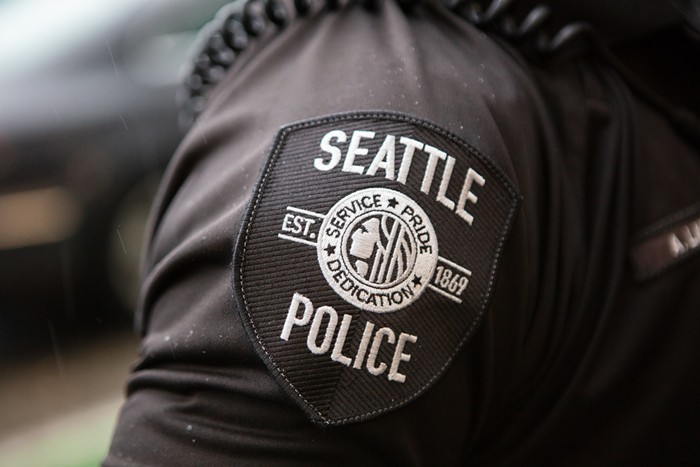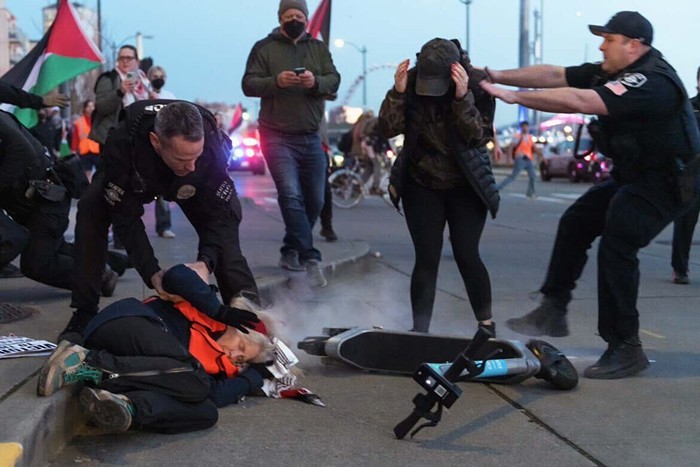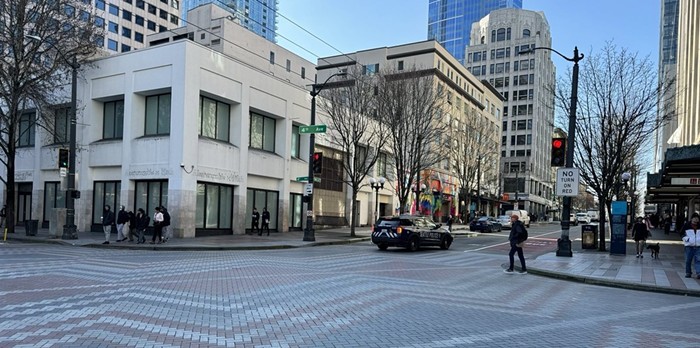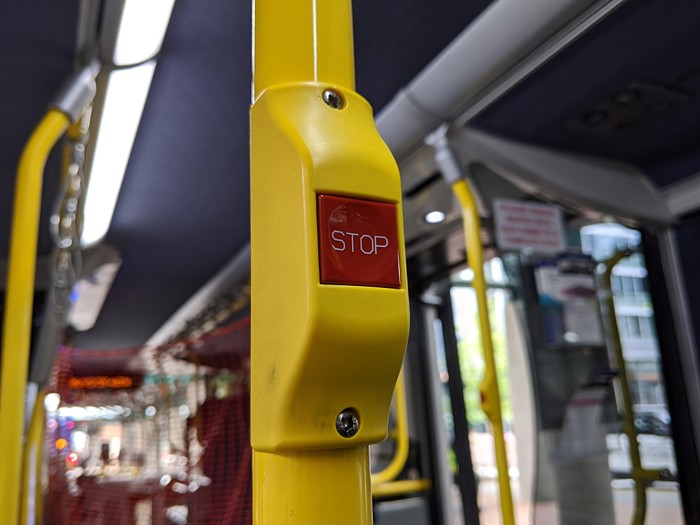
The local iteration of Trump TV (aka KOMO) recently aired an hour-long News Special attempting to offer an examination of Seattle's homeless crisis that's as sober as possible. To make sure the viewer is sufficiently alarmed, it is called "Seattle Is Dying." This city—with a GDP of over $250 billion and a corporate community with a market-capital value that's over $2 trillion—is experiencing nothing less than its final days. It has one foot in the grave. The problem? KOMO believes that it's a lack of dick-hard policing. Seattle's law enforcers are powerless, or, to use the sexually charged wording of a cop who's interviewed in the special, impotent. One shot shows bike cops unable to do a damn thing about Rastafarians sitting on a park bench. The liberal City Council, and not Jah, is protecting them from Babylon's oppressors.
The consequence of this limp-dick policing is that the productive members of society can't get a break and take their kids to the parks (and one supposes their dogs as well—the 206 actually has more hounds than snotty noses), and citizens no longer feel safe. The "news" special gives a voice to these apparently unheard-of people. At one point, an interviewee—the owner of a bouncy house business—damn near breaks into the opening lines of "The Message" by Grandmaster Flash and the Furious Five ("Broken glass everywhere / people pissing on the stairs, you know they just don't care / I can't take the smell, I can't take the noise...") Seattle today, according to Trump TV, is just as bad as New York City was back then, the late 1970s, those dark, dark days when the Big Apple was told to drop dead.
Sinclair-owned right wing Seattle TV station KOMO made a documentary about the homeless and they might want to go back to film school where they teach you — on the first day — not to shoot subjects from a distance, with a long lens, as if they are dangerous wild animals. https://t.co/U4vU9javdT
— Bezostown (@bezostown) March 18, 2019
Now, let's get serious. Back in the 1990s, the linguist Noam Chomsky described mainstream media as a complex of organizations that manufacture consent. But it also manufactures a specific and clearly irrational set of social feelings. One such feeling is a hatred for the poor. In a world that is not inverted, the opposite would be normal: a publicly spirited media would never fail to manufacture a hatred for the rich and view the endless accumulation of money as, to use the words of the most influential economist of the first half of the 20th century, John Maynard Keynes, a "disgusting morbidity, one of those semicriminal, semi-pathological propensities which one hands over with a shudder to the specialists in mental disease."
The thing one should always wonder at, and in this wonder appreciate the enormous power of consensus building, is that this kind of behavior—hungering for more money when you already have too much of it—is not designated as "semicriminal" in our world, but its very opposite: The victims of this semicriminal (or just out-right criminal) otherworldly passion for money are totally normal. And so the concentration of massive amounts of socially produced wealth in the hands of a few and elite (and, yes, very white) Seattleites is not seen for what it is: criminal. But the visibly extreme poverty imposed on thousands of people (yes, many of whom are people of color) is. Not having access to a culturally basic standard of living is breaking the law.
What does this tell us? That the manufactured hatred of the poor justifies a perverted world that criminalizes the condition of poverty. Please, give this a moment of thought. It's not as obvious as it seems. It's downright bizarre. It should astonish you in the same way that the sight of an elephant flying with its ears would. What's truly fantastic is that no one is throwing cuffs on the hands of the maddest members of the city, the Bezoses or the Shultzes, and locking them up in an insane asylum. In this, our perverted world, what's abnormal is not obscene wealth, but its consequences.
In one moment of "Seattle Is Dying," a camera mounted on a drone rises from the human filth on a hill and slowly turns to the towers of tech, municipal, and financial power. In this inverted/perverted KOMO world, the shock is not that the business district is right next to a homeless camp, but that a homeless camp is right next to the business district. There is an important difference between the two perspectives. In the second, the camp of misery is not about the city killing many of its people, but extremely poor people killing an affluent city. Now that is rich.
There’s a reason so many homeless people struggle with substance abuse and mental health issues. It’s called neoliberalism. Cutting taxes for the wealthy. Slashing public spending. Closing hospitals that were sanctuaries for those crippled by mental illness. #SeattleisDying
— Deepa Bhandaru (@BhandaruDeepa) March 18, 2019



















